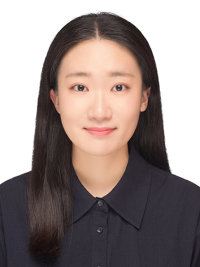Schur Group
Virus, Cell, and Tissue Architecture
Numerous biological properties are governed by architectural and structural principles that depend on the higher-order, three-dimensional organization of biomolecules. This is manifested, for example, in the cytoskeleton, extracellular matrix, genome architecture, and viral assembly.
How this organization is established, maintained, and dynamically adapted remains incompletely understood, largely due to the limited ability to study biomolecules within their native interaction networks at sufficient spatial resolution.
Developing and integrating advanced structural and cell biology methods is therefore essential to elucidate how molecular organization gives rise to complex biological functions. The Schur group develops such integrative approaches using cryo-electron microscopy (cryo-EM), cryo-electron tomography (cryo-ET), and advanced image processing to uncover how molecular assemblies shape the architecture of viruses, cells, and tissues.
Our research focuses on intra- and extracellular filamentous assemblies—including the actin cytoskeleton and the extracellular matrix—which are central to cell migration, tissue organization and maintenance. We also investigate how protein–protein interactions define virus assembly and infection pathways, which are often governed by distinctive geometrical and structural principles. We place particular emphasis on pleomorphic viruses such as retroviruses and poxviruses.
More recently, through the EvoChromo project, we have begun to explore the evolutionary emergence of genome architecture
Team
Current Projects
ActinID – a molecular atlas of the actin cytoskeleton | A Structural Atlas of the Extracellular Matrix | Viral architectures in retroviruses and poxviruses | EvoChromo – The rise of genome architecture | Cryo-electron tomography and image processing method development
Publications
Carpentier R, Kim J, Capizzi M, Kim H, Fäßler F, Hansen J, Kim MJ, Denarier E, Blot B, Degennaro M, Labou S, Arnal I, Marcaida MJ, Peraro MD, Kim D, Schur FK, Song J-J, Humbert S. 2025. Structure of the Huntingtin F-actin complex reveals its role in cytoskeleton organization. Science Advances. 11(38), eadw4124. View
Vorlaufer J, Semenov N, Kreuzinger C, Javoor M, Zens B, Agudelo Duenas N, Tavakoli M, Suplata M, Jahr W, Lyudchik J, Wartak A, Schur FK, Danzl JG. 2025. Image-based 3D active sample stabilization on the nanometer scale for optical microscopy. Biophysical Reports. 5(2), 100211. View
Obr M, Percipalle M, Chernikova D, Yang H, Thader A, Pinke G, Porley Esteves D, Mansky LM, Dick RA, Schur FK. 2025. Distinct stabilization of the human T cell leukemia virus type 1 immature Gag lattice. Nature Structural & Molecular Biology. 32, 268–276. View
Datler J, Hansen J, Thader A, Schlögl A, Bauer LW, Hodirnau V-V, Schur FK. 2024. Multi-modal cryo-EM reveals trimers of protein A10 to form the palisade layer in poxvirus cores. Nature Structural & Molecular Biology. 31, 1114–1123. View
Zens B, Fäßler F, Hansen J, Hauschild R, Datler J, Hodirnau V-V, Zheden V, Alanko JH, Sixt MK, Schur FK. 2024. Lift-out cryo-FIBSEM and cryo-ET reveal the ultrastructural landscape of extracellular matrix. Journal of Cell Biology. 223(6), e202309125. View
ReX-Link: Florian Schur
Career
Since 2024 Professor, Institute of Science and Technology Austria (ISTA)
2017 – 2024 Assistant Professor, Institute of Science and Technology Austria (ISTA)
2016 – 2017 Postdoc, European Molecular Biology Laboratory, Heidelberg, Germany
2016 PhD, European Molecular Biology Laboratory, Heidelberg and University of Heidelberg, Germany
Selected Distinctions
2022 ERC Starting Grant
2021 FEBS Excellence Award
2021 EMBO Young Investigator
2021 ChanZuckerberg Initiative Visual proteomics grant
2020 FWF Standalone research grant
2018 FWF Standalone research grant
2016 Journal of Structural Biology, Paper of the Year Award














